The Kalevala, Finland’s national epic, was compiled by Elias Lönnrot in the 19th century from a huge collection of folk poetry and songs collected over many many years of study. In compiling the Kalevala, Lönnrot purposefully used only a carefully selected fraction of the material in his folk poetry archives to come up with a decidedly Christian Kalevala. “The Kalevala as we know it today is really Elias Lönnrot’s epic, and it reflects his world view as a devout Christian keen to depict the Finns as a civilised people with monotheistic beliefs, as part of the contemporary nation building process,” says Juha Pentikäinen, professor of northern ethnography at the University of Lapland and Institute of Northern Culture in Tornio, in northern Finland,
But what if someone wrote another version, drawing on the lore of bear cults and shamanism found in Finnish folklore? Other folklorists could use the same source material to compile quite different stories that might reflect ancient beliefs far more accurately than Lönnrot’s rather more christian world-view. Elias Lönnrot himself said that he could have compiled a number of different but equally valid versions of the Kalevala from the same source material.
And now, Juha Pentikäinen aims to compile an alternative Kalevala in the form of a shamanic epic based on the ancient bear cult. Pentikäinen recognises the artistic and historical value of Lönnrot’s Kalevala but feels that Lönnrot took liberties by adding material of his own, reshaping ancient stories, and giving his epic a linear structure similar to the Bible, when in reality the world view of the ancient Finnish and Karelian rune-singers was cyclical and based on shamanic beliefs. “For this reason I feel there’s a need for a new, different epic closer to the world view of the original singers, with no artificial religious or nationalistic elements,” he says.
An Alternative Kalevala based on the pre-Christian Bear Cults…..
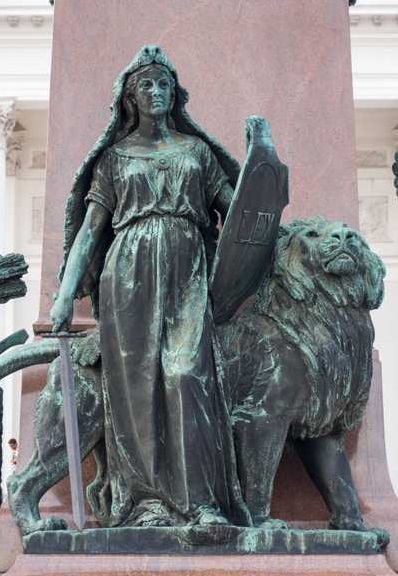
The 1894 monument to Tsar Alexander II on Helsinki’s Senate Square includes a woman often interpreted as Finland personified. Look closely and you’ll see she’s wearing a bearskin hood.
Pentikäinen is planning to compile his “alternative Kalevala” based on original source material not used by Lönnrot, especially poems reflecting the bear cults that were once widespread amongst the peoples of northern europe and northern asia before the Christian era. “There is plenty of runic material in the archives to create a bear epic that will be truer to tradition than the Kalevala,” he explains.
The pre-Christian Finns believed the bear to have come from the stars and that it had the ability to reincarnate. After a successful bear hunt, a celebration called karhunpeijaiset (literally “celebration of the bear”) was arranged in honour of the slain bear. The purpose of the ceremony was to placate the bear and to convince its soul that it was greatly respected by the people. The bear was so feared that some of the songs sung during the ceremony were meant to convince the bear it hadn’t been slain by the hunters, rather that it had killed itself by accident. The people presiding over the ceremony tried to make the bear’s soul happy so that the bear would want to reincarnate back into the forest. After the bear’s meat was eaten, the bones were buried. The skull, however, which was believed to contain the bear’s soul, was placed high upon the branches of an old pine tree. This tree, kallohonka (skull pine), was probably a symbol of the world tree and the ceremony was meant to deliver the bear’s soul back to the heavens, from where it had originated. From the heavens, the bear would come back and reincarnate to walk the earth.
Moreover, it was forbidden to use the word for bear in casual conversation, so many euphemisms were developed. In fact, the current standard term for bear, karhu, is originally a euphemism (from karhea “rough”, referring to the rough fur). The oldest known and possibly the original name is oksi, preserved in many place names. The euphemisms were used because it was believed the bear would appear if its real name was called. Modern Finnish still contains many euphemisms for the bear.
So pervasive was this old Finnish bear cult that we see traces of it even in Lönnrot’s Kalevala. Mielikki for example is the Finnish goddess of forests and the hunt. She is referred to in various tales as either the wife or the daughter-in-law of the God Tapio. She is said to have played a central role in the creation of the bear. In the Kalevala, the hero Lemminkäinen offers Mielikki and Tapio prayers, gold and silver so he can catch the Hiisi elk. In another passage, Mielikki is asked to protect cattle grazing in the forest. In a country where the forest was central to providing food through hunting, gathering and cattle grazing, it was thought very important to stay on her good side.
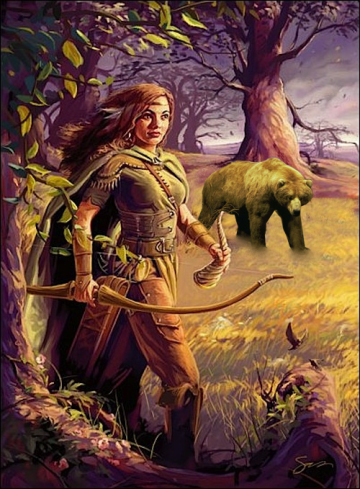
Mielikki, the Finnish Goddess of game, hunting and the forest,. In one legend, Mielikki plays the central role in creating the first bear.
Pentikäinen’s “alternative Kalevala” will encompass the celestial creation of the bear, its manifestation in the northern sky as the bear constellations, the sacred animal’s natural birth and annual cycle on earth, the ritual death and burial of a bear killed by hunters, and a mythical wedding before the bear returns to the skies. He envisages his epic as being shorter and hopefully more exciting and more accessible than the version of the Kalevala that schoolchildren across Finland must read today. However, he has resolved to remain faithful to original poetic wordings and use the same trochaic meter that gives the Kalevala its characteristic rhythm.
Pentikäinen has traveled widely in Russian Karelia, Lapland and Siberia, visiting ethnic groups related to the Finns, and meeting shamans and singers who have preserved ancient traditions. “The best way to learn about the deep roots of Finnish folk culture is to sit around the fires of shamans in Siberia and listen as they sing the mythological epics of their peoples,” he says.
The role of the bear in arctic mythologies represents a long-time interest for Pentikäinen. His book Golden King of the Forest (Etnika, 2007) spotlights the bear’s unique place in northern folklore and imagery. Bear cults are reflected in superstitions that persist to this day in Finland, and in the many place names that include words denoting bears, such as kontio,otso, otava, ohto, kouvo or the modern Finnish word for “bear,” formerly taboo: karhu.
Although Pentikäinen has faced considerable opposition among Finnish scholars reluctant to see Finnish folk poetry interpreted in the context of shamanism, other readers will eagerly await the publication of his alternative Kalevala as a new window into ancient Finnish and Karelian beliefs.
Ancient Bear Cults
The prehistoric bear cults in evidence in Finland may however simply be the more recent traces of an ancient bear cult that dates back to as far as the middle paleolithic period. The existence of an ancient bear cult in the middle paleolithic period has been a topic of discussion spurred by archaeological findings. Ancient bear bones have been discovered in several different caves and are believed by some archaeologists to be evidence of a bear cult during the paleolithic era. It was not the mere presence of these bones that intrigued archaeologists, but their peculiar arrangement. Upon excavation, archaeologists on site determined that the bones were found arranged in such a way that it was not naturally possible. Emil Bächler, an early supporter of the argument for the presence of an ancient bear cult, found bear remains in Switzerland and at Mornova Cave in Slovenia. Along with Bächler’s discovery, bear skulls were found by André Leroi-Gourhan arranged in a perfect circle in Saône-et-Loire. The discovery of designs such as those found by Leroi-Gourhan suggests that these bear remains were placed in their arrangement intentionally; an act which has been attributed to Homo Neanderthalensis and is assumed to have been a part of some sort of ceremony.
In 1923, a headless clay sculpture of a bear that dates back to 20,000 years ago, was found by the intrepid speleologist Norbert Casteret in the cave of Montespan in the French Pyrenees.his is a life-size model, some two feet high (0.6 meters) and almost four feet long (1.2 meters) representing a massively proportioned bear, lying down on its belly. It is thought to have been originally covered by the skin of a bear, with the head fixed in its proper place by a wooden stick. The sculpture is riddled by spear marks, so it presumably was used for a ritual. The skull of a young bear was found between the forepaws of the sculpture. There are also about 100 bear representations in paleolithic art from around europe.
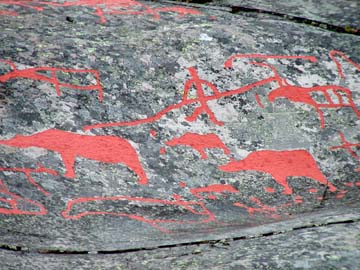
The drawing shows 3 bears with a man above them with a spear, suggesting a hunting scene. It can also be interpreted as a symbol of the bear cult, a theme found among all the peoples in the circumpolar region.
Rather more recently, rock carvings at Alta, in the county of Finnmark in northern Norway, date back as far as 4200 BC and include many depictions of bears. Bears seem to have played a special role in the carvers’ culture: they feature prominently in many carvings and frequently appear not only as animals to be hunted but are also often depicted in positions that seem to indicate that bears were worshipped in some form of cult (which seems very plausible since bear cults are known in many old cultures of northwestern Russia as well as in Sami culture). The depiction of bears seems to have ceased around 1700 BC; this might indicate a change in religious beliefs around that time. The problem remains for the historian to determine the links that may have existed between possible Palaeolithic bear cults and the cults of antiquity and the High Middle Ages.
Some of the books listed below delve into this subject, such as Geoffrey Ashe’s book “Dawn Behind the Dawn” where the author explores the association of the Greek goddess, Artemis, with bears. In one myth she transforms Callisto, one of her maidens who has angered her, into a bear and then assigns her to the heavens as the constellation Ursa Major. At the temple of Artemis in Brauronia, during a festival held every five years, two young girls aged five and ten wore yellow bearskin robes and performed the bear dance. Ashe postulates that Indo-European tribes brought from the Northern countries the image of a bear goddess who became Artemis in Greece. There are many other such examples in european pre and early history. Pentikäinen’s alternative Kalevala will offer a new window into ancient Finnish and Karelian beliefs.
 Copyright secured by Digiprove © 2014 Alternative Finland
Copyright secured by Digiprove © 2014 Alternative Finland


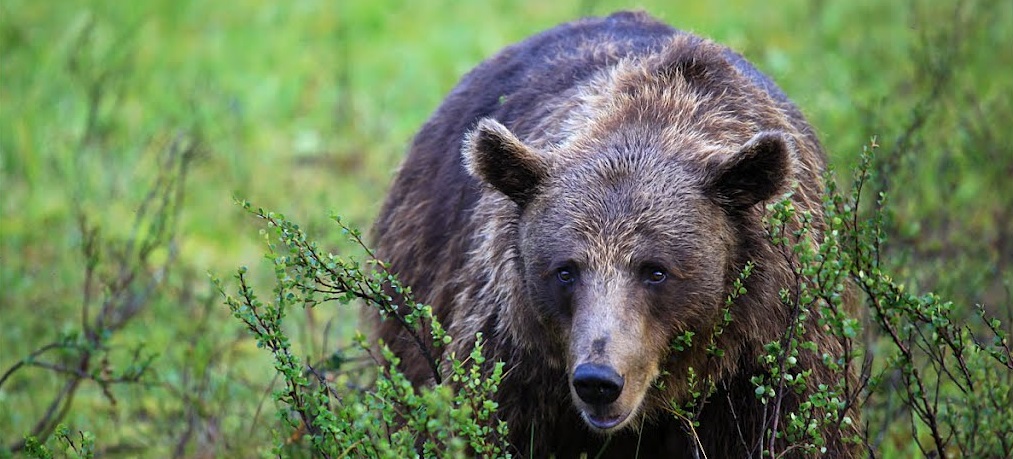
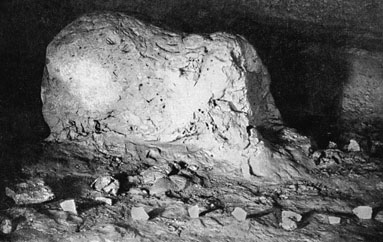

One Response to An Alternative Kalevala?